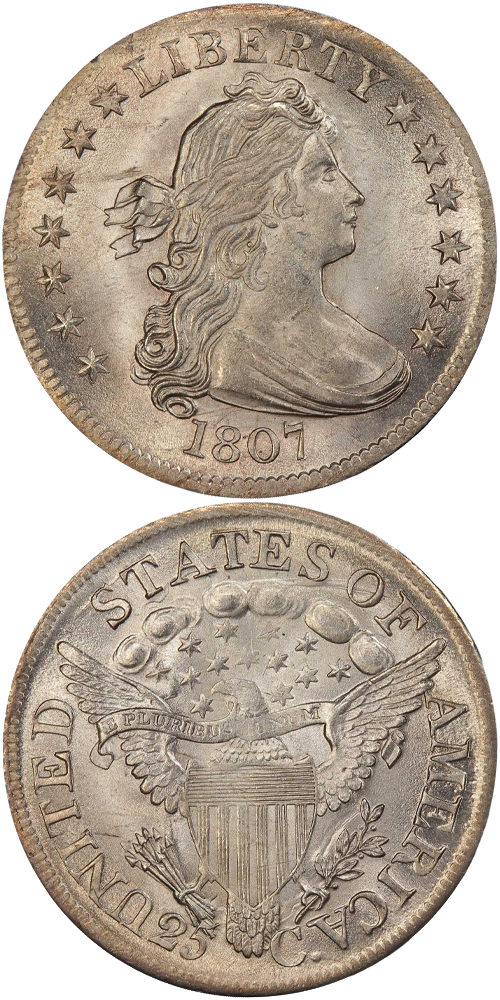1807 Draped Bust Quarter
This is the final year of the design type and the final year of quarter dollar production until the denomination returned in 1815. Over this interval, half dollars became the largest coin of the realm. Silver dollar coinage had been suspended three years earlier, and despite Jefferson's insistence that the Mint make small silver coins for common people, at this point the decision of what kind of coins were to be struck was up to the persons depositing the bullion, not the Mint. Given that most depositors were banks or corporate entities, coins of larger value were preferable to barrels full of half dimes, dimes and quarters. The mintage totals for quarters surpassed 200,000 coins per year in both 1806 and 1807; there would not be two consecutive years with mintages surpassing even 150,000 quarters until the 1830s.
There are two die varieties of 1807 quarters. In lower grades, neither variety is a rarity. At the Gem Uncirculated level, as here, each is an object of great desire. This date is often chosen by type collectors, but even those who pursue exclusively Mint State coins often must settle for lower grades, or coins certified at high grades but exhibiting poor aesthetic appeal. The largest concentration of PCGS grades is at the MS-63 level. In MS-65 or finer, the number of extant specimens is not sufficient to meet the demand for this date and type.
The example to the left was sold by Stack's Bowers Galleries in the November 2017 Baltimore Auction, where it realized $162,000.






